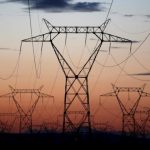Pakistan government is studying a Turkish model for privatising power distribution companies (DISCOs), under which private sector will be engaged without selling state assets.
A committee, constituted by the government and comprising ministers for power and privatisation, is examining a Turkish model along with other models for privatising public sector DISCOs.
Under the Turkish model, assets will not be sold and a 30-year contract will be inked with a private sector entrepreneur against the minimum performance standards set by the government.
Pakistan’s electricity shortages are rooted in high system losses, seasonal reduction in availability of hydroelectric power and circular debt, according to the National Electric Power Regulatory Authority (Nepra)’s recently issued State of the Industry Report 2019.
Nepra mentions in the report that it will not be out of place to say that present problems have emanated from centralised control. Following bad performance of DISCOs, the regulator has recommended the privatisation of energy firms.
“The skillset and capacity of DISCOs to handle problems and their ability to meet challenges of the regulatory regime under the Amendment Act 2018 is non-existent. Persisting with this model would only reinforce failure. Therefore, for any recovery of the sector, DISCOs have to be made independent, while total or partial privatisation of DISCOs must be undertaken forthwith,” the report said.
Nepra has also pointed out in its earlier reports that the centralised governance model for DISCOs has failed to bring any noticeable improvement over a period of more than 15 years now. Distribution losses and recovery ratios have stayed where they were about five years ago.
The circular debt is another major issue afflicting the power sector. Overall receivables of all DISCOs have increased by Rs248.85 billion, which is considerably higher than the increase of Rs166.26 billion registered in financial year 2017-18.
As of June 30, 2019, the overall distribution sector receivables stood at Rs1,145 billion whereas the receivables at the start of the financial year were Rs896.15 billion.
One of the contributors to the circular debt is the high transmission and distribution (T&D) losses of DISCOs. State-owned DISCOs, which are ex-Water and Power Development Authority (Wapda) companies, reported actual losses of 18.6% in 2013-14, while in 2018-19 the overall losses were calculated at 17.7%, an improvement of less than one percentage point. In contrast, K-Electric’s T&D losses dropped from 23.7% in 2015 to 19.1% in 2019, a contraction of 4.6 percentage points.
The recovery of bills also shows a similar trend. The actual recovery ratio for DISCOs was 89.11% in 2013-14, which in 2018-19 came in at 90.25%. K-Electric, the only private power distribution company, had a recovery ratio of just under 93%, as per the report. The regulator believes that the existing setup, where Pakistan Electric Power Company (Pepco) has central control, is not capable of delivering the necessary improvement in the system and controlling the accumulation of circular debt.
For arresting the circular debt, accounting measures only will not suffice and structural changes are required, says the report.
In this respect, Nepra advocates that besides allowing independence, as foreseen under the 1992 power sector reforms plan for generation companies (Gencos) and DISCOs, total privatisation or public-private partnership model may be explored by the federal government.
A major problem for Pakistan is that its power production is dominated by thermal plants running on oil and gas. Originally, the installed hydel-thermal generation capacity ratio in the country was about 67% to 33% (1985) but with the passage of time, due to different reasons, more thermal generation was added, reducing the share of hydroelectric power.
At present, the hydel-thermal generation ratio is about 25% to 65%. In financial year 2018-19, the share of electricity generated by natural gas stood at 31.33% compared to 32.24% in 2017-18.
In 2018-19, the share of electricity generated by re-gasified liquefied natural gas (RLNG) was 34.47% while the share in 2017-18 was 23.01%.
Both these factors have led to a gradual increase in the cost of power as well as high import bills.







